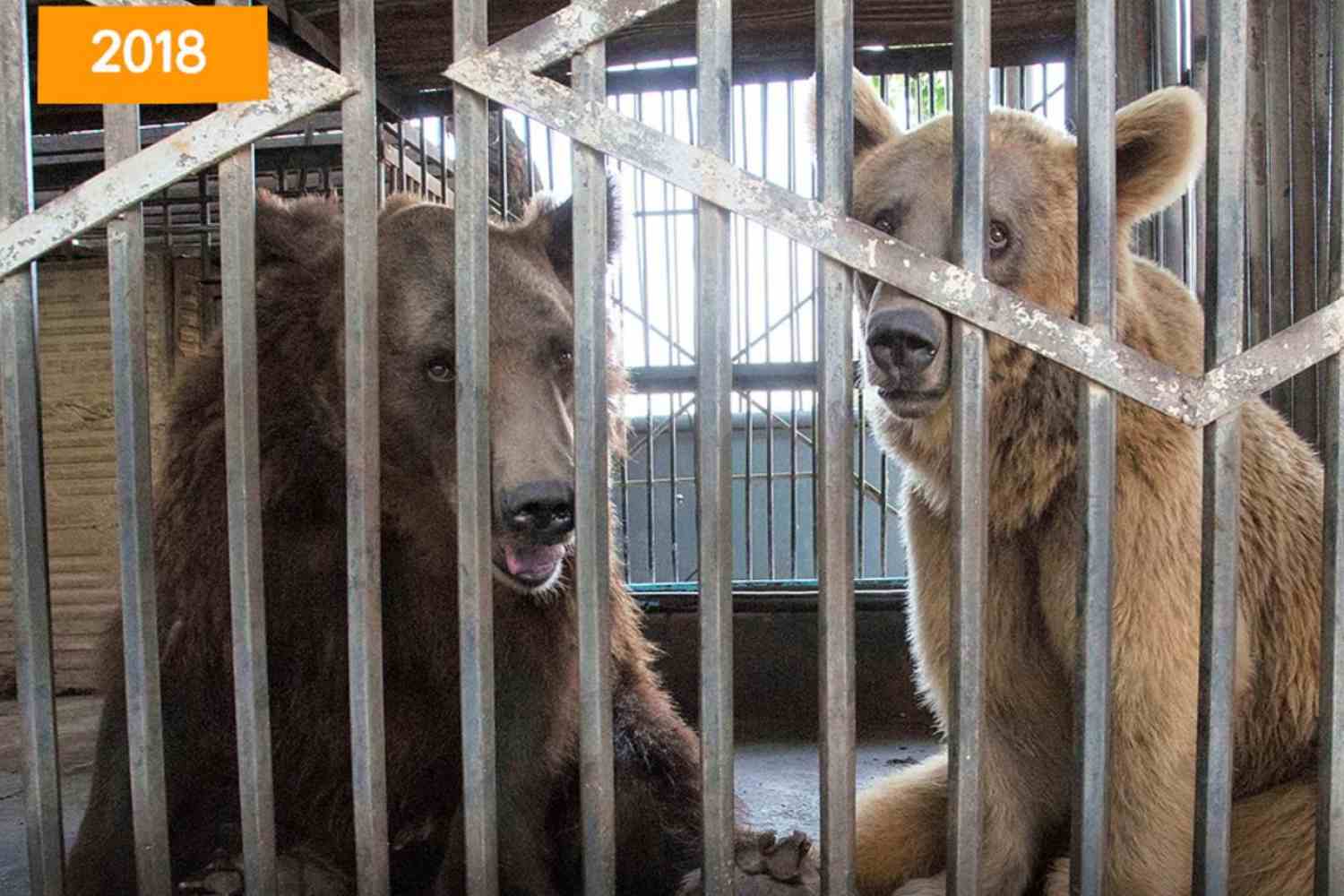Rescued from inhumane conditions, locked in cages and mistreated, dozens of Syrian brown bears in Armenia are welcomed into rehabilitation centers to relearn how to live free. Max and Minnie are examples, now enjoying open spaces and receiving veterinary care after years of captivity

In the heart of Yerevan, the capital of Armenia, several Syrian brown bears were living in inhumane conditions, locked in courtyards, basements and even workshops. A mother with her cub and an adult male, overweight and malnourished, were confined in makeshift cages made of metal and wire, surrounded by rotten food and waste. The absence of veterinary care and signs of physical abuse made their long period of suffering and deprivation painfully evident.
The practice of keeping wild bears in captivity increased in Armenia during the 1990s, amid post-Soviet economic chaos, when animals were captured as status symbols or tourist attractions. Although Armenian law prohibits keeping them without a permit, enforcement has long been ineffective. Since then, the situation has improved thanks to the efforts of the Foundation for the Preservation of Wildlife and Cultural Assets (FPWC), which has rescued approximately 30 bears from restaurants, hotels, gas stations and private homes.
The recovery journey in rehabilitation centers
The freed bears are transferred to rehabilitation centers, such as the one near Urtsadzor, about an hour from Yerevan. Here they receive veterinary care, balanced nutrition and activities to stimulate natural behavior, such as playing and foraging for food. Some younger bears, if moderately socialized, can be reintroduced into remote national parks, while adults who have been mistreated for extended periods often remain in secure facilities, where they gradually learn to reduce compulsive behaviors.
Rescue operations are complex and require international collaboration. The case of Max and Minnie, two bears rescued from a bus station, saw veterinarians from Armenia, Iran and the United Kingdom coordinate their transport and settlement. Max, a 1,100-pound (500 kg) male, traveled on a horse trailer, while Minnie rode in a crate with straw. Both now enjoy open spaces and natural routines, preparing for winter hibernation for the first time in their lives.
The main challenge is raising awareness
Despite progress, the main challenge remains cultural change. Many citizens do not perceive animal welfare as a priority and laws require greater resources and enforcement. With the upcoming COP17 in Armenia, the government and NGOs aim to demonstrate a more ethical approach to wildlife, but it’s clear that long-term protection requires adequate facilities and shifts in public perception. The new, larger center in Ushi represents a step toward solving these problems, offering refuge to rescued bears and raising awareness about the importance of not treating endangered animals as entertainment.
Source: International Animal Rescue / International Animal Rescue
